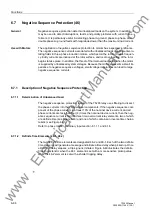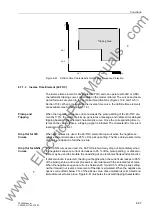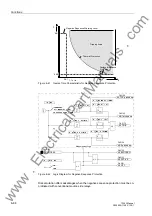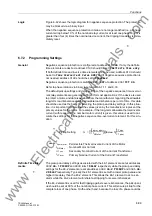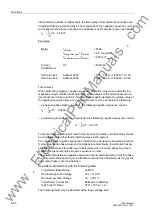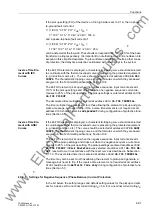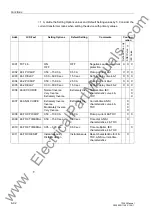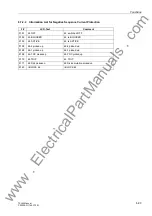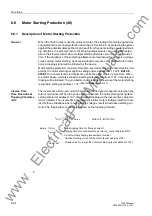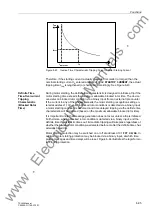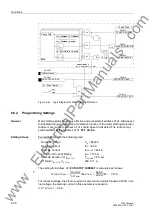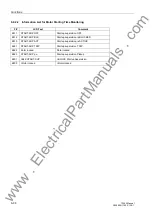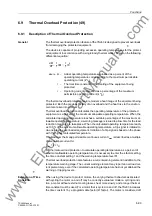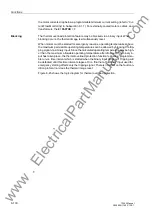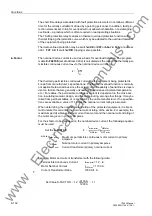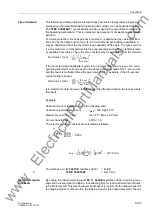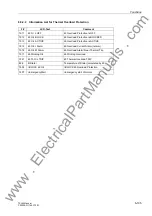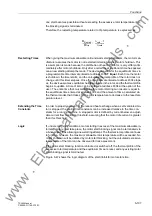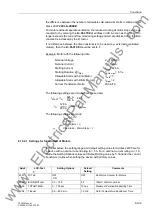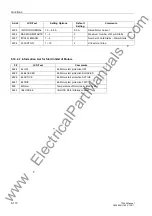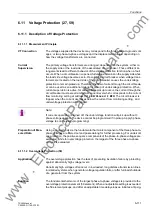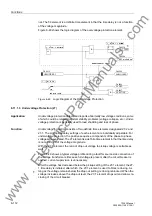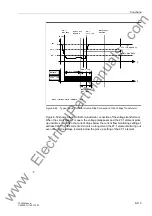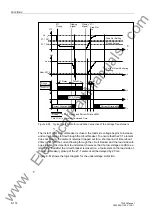
Functions
6-99
7SJ63 Manual
C53000-G1140-C120-1
6.9
Thermal Overload Protection (49)
6.9.1
Description of Thermal Overload Protection
General
The thermal overload protection feature of the 7SJ63 is designed to prevent overloads
from damaging the protected equipment.
The device is capable of projecting excessive operating temperatures for the protect-
ed equipment in accordance with a single-body thermal model, based on the following
differential equation:
The thermal overload protection feature models a heat image of the equipment being
protected. Both the previous history of an overload and the heat loss to the environ-
ment are taken into account.
Thermal overload protection calculates the operating temperature of the protected
equipment as a percent of the maximum allowable operating temperature. When the
calculated operating temperature reaches a settable percentage of the maximum al-
lowable operating temperature, a warning message is issued to allow time for the load
reduction measures to take place. When the calculated operating temperature reach-
es 100 % of the maximum allowable operating temperature, a trip signal is initiated to
de-energize the overloaded equipment. Initiation of a trip signal is based on the phase
with the highest calculated temperature.
The maximum thermally-permissible continuous current I
max
is described as a multiple
of the nominal current I
N
:
I
max
= k × I
N
For thermal overload protection to calculate operating temperature as a percent of
maximum allowable operating temperature, it is necessary to enter the k factor setting,
the time constant setting
τ
and the warning temperature level
Θ
.
Thermal overload protection also features a current warning element in addition to the
temperature warning stage. The current warning element may report an overload cur-
rent prematurely, even if the calculated operating temperature has not yet attained the
warning or tripping levels.
Extension of Time
Constants
When using the device to protect motors, the varying thermal behaviors associated
with cycling the motor on and off may be correctly evaluated. Under a cycling condi-
tion, a motor without external cooling losses heat more slowly, and a longer thermal
time constant must be used. For a motor that is cycled on and off, the 7SJ63 increases
the time constant
τ
by a programmable factor (k
τ
factor). The motor is considered off
d
Θ
dt
--------
1
τ
---
Θ
⋅
+
1
τ
---
I
2
⋅
=
where
Θ
–
Actual operating temperature expressed as a percent of the
operating temperature corresponding to the maximum permissible
operating current (k*I
N
)
τ
–
Thermal time constant for the heating of the equipment being
protected
I
–
Operating current expressed as a percentage of the maximum
permissible operating current (k*I
N
)
www
. ElectricalPartManuals
. com
Содержание siprotec 7SJ63
Страница 16: ...xiv 7SJ63 Instruction Manual C53000 G1140 C120 1 w w w E l e c t r i c a l P a r t M a n u a l s c o m ...
Страница 28: ...Introduction 1 12 7SJ63 Manual C53000 G1140 C120 1 w w w E l e c t r i c a l P a r t M a n u a l s c o m ...
Страница 112: ...SIPROTEC 4 Devices 4 38 7SJ63 Manual C53000 G1140 C120 1 w w w E l e c t r i c a l P a r t M a n u a l s c o m ...
Страница 346: ...Functions 6 182 7SJ63 Manual C53000 G1140 C120 1 w w w E l e c t r i c a l P a r t M a n u a l s c o m ...
Страница 494: ...Technical Data 10 48 7SJ63 Manual C53000 G1140 C120 1 w w w E l e c t r i c a l P a r t M a n u a l s c o m ...
Страница 604: ...Index Index 6 7SJ63 Instruction Manual C53000 G1140 C120 1 w w w E l e c t r i c a l P a r t M a n u a l s c o m ...


